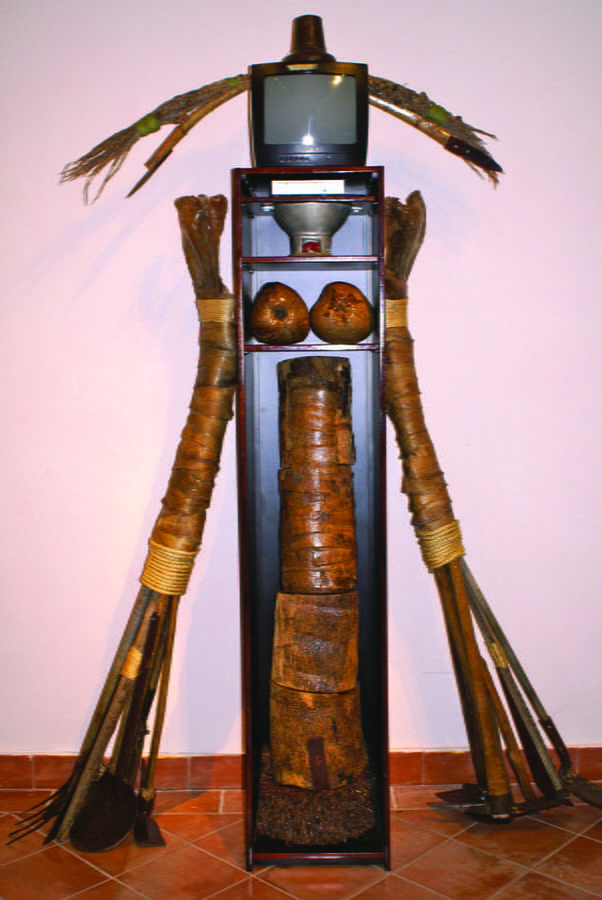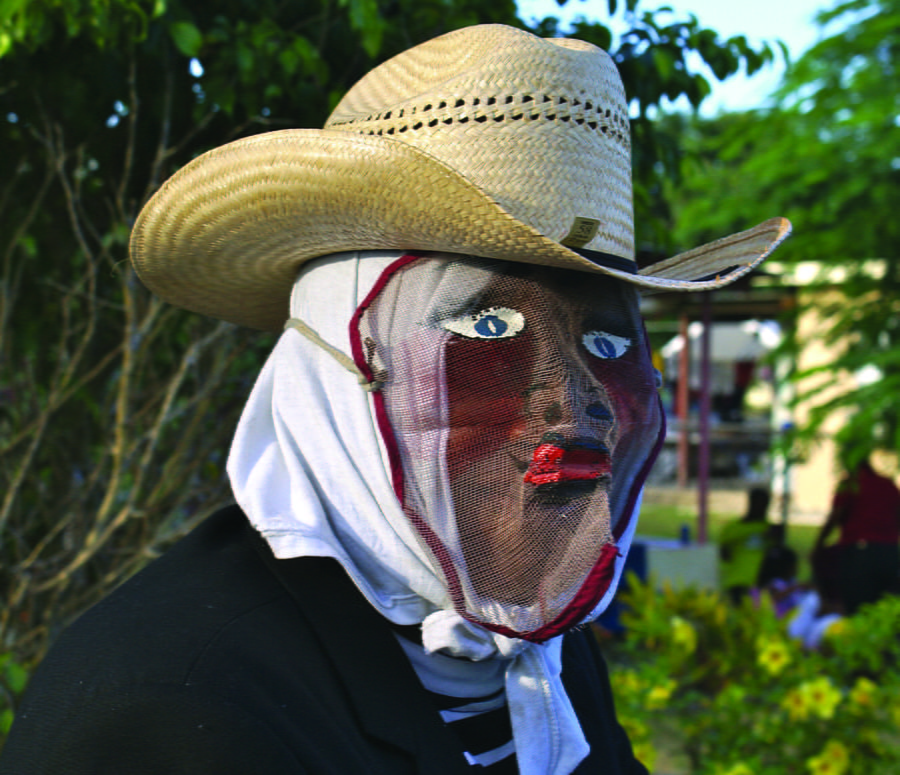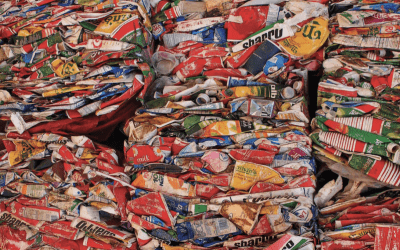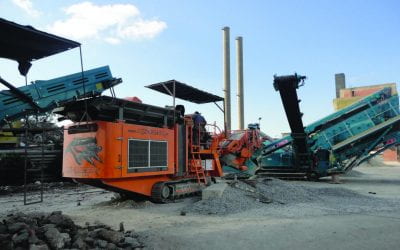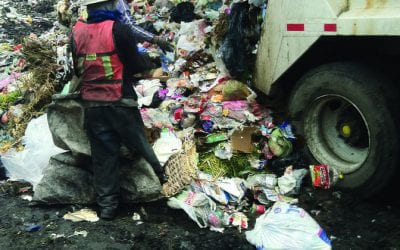Daniel Lind-Ramos
Standing (De Pie) in Loíza
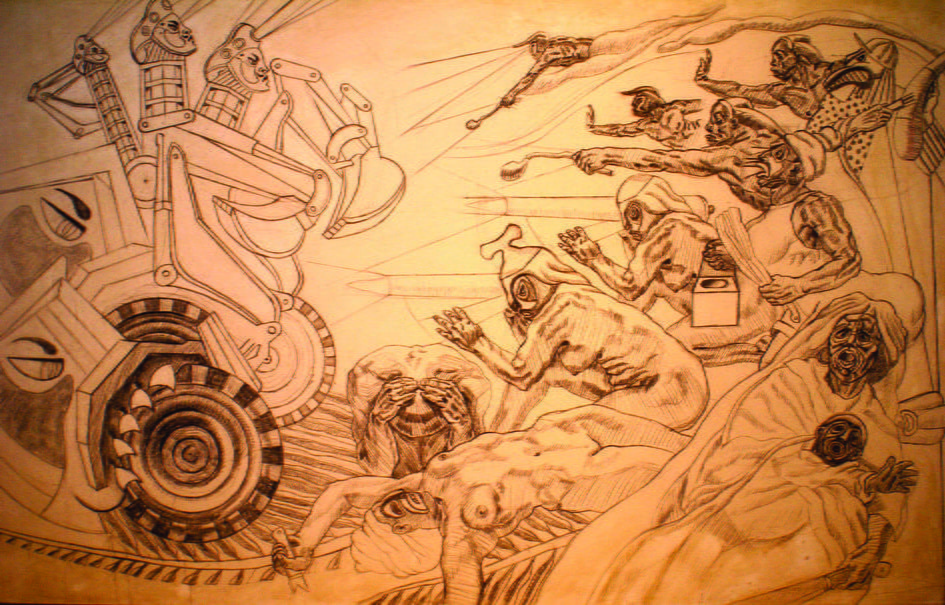
Charcoal-drawn image of the local struggle against foreign commercial development. Photo by Lowell Fiet.
The accomplished African-Puerto Rican artist Daniel Lind-Ramos paints on canvas with oil, brushes, and spatulas, meticulously blending colors, layering textures, and shaping images. He also works with common cardboard, wire screen, discarded appliances, car parts, the refuse of coconut palm trees, broken musical instruments and used articles of everyday domestic and agricultural labor. Local artisans in his hometown of Loíza, the seat of Puerto Rico’s African cultural heritage, use these materials as well to create the dynamic masks of the characters for the annual Fiestas of Santiago Apóstol.
Lind-Ramos’ mastery as a painter of large canvasses has been established over decades, but he also increasingly innovates through installation, video production and assemblage. He experiments with versions of the Viejo (foolish old man) mask of the Fiestas, which is crafted from cardboard and less defined than the better known coconut-husk Vejigante (trickster-devil) mask, the wire-screen face mask of the dandy-like Caballero (gentleman or knight), or the blackened and made-up face of the cross-dressed Loca (crazy woman). For Lind-Ramos, the Viejo permits broader interpretive possibilities. That practice results in a reconfiguration of his artistic media as a more direct reflection of the social and cultural environment of Loíza, located about 10 miles from San Juan on the island’s northeast coast.
“Majestic” is not a critical term nor does it fully express the design and reach of the assemblages of Daniel Lind-Ramos. Yet the word kept ringing in my head while I walked among the pieces and then after I left De Pie (Standing), an exhibit of newly assembled pieces by Lind-Ramos on the second floor of the Museum of the Americas in the colonial Ballajá Barracks in Old San Juan, from November 23, 2013, through February 2014. The exhibit displayed what I can only call a majestic dance or interplay of local specificities and abstract art, fixed objects and performance, and supposed ethnographic and universal aesthetic elements. It explored a kind of creative pointillism to fill a global map dot by dot, space by space, that counteracts the marginalization of art for reasons of geography, gender, race or belief system.
“Standing” could signify political or cultural resistance or maybe still “standing” after so many years; it could also be “stand” up as command or incentive for reclamation of rights or of what’s owed; or “standing” out, becoming visible against a backdrop of prior invisibility. But it perhaps better communicates the height and structural independence of a solid and firmly rooted base that allows the artist to erect polyvalent totemic forms forged from the natural vegetative refuse and recycled articles of the day-to-day domestic and work environment of the tropical coastal region of Loíza. De Pie reflects four decades of mature creativity, always innovative, experimental and capable of reinventing itself without losing touch with rootedness, as much in the artist’s skilled technical control of his medium as in the sandy earth, the foliage and the social, cultural, and domestic specificities of the African-Puerto Rican community. Lind-Ramos “stands” from Loíza with his shadow pointing toward San Juan, New York, and Paris, where he has studied and worked, and toward the University of Río Piedras-Humacao Campus, where now he teaches; also farther out, toward showings in Senegal, Buenos Aires, Trinidad, Jamaica and Barbados, among others, but always with his feet (pies) like rhizomes firmly planted in the stories of survival and sustenance of the Antilles.
Lind-Ramos’ assemblages are not simply found objects on display or “ready-mades.” Everything is purposefully selected and then transformed as it joins with other elements: old televisons, saws, hoes, machetes, burlap bags, the sharpened metal spikes that open coconut husks, cooking pots blackened by open fires, glass food-storage cases that now display lists of names and other relics, all drawn into compositions alongside palm trunks, the fibrous trunk fabric (yaguas), the branches or fronds (pencas) and the coconuts themselves. The large pieces project multiple realities that range from the repulsion of British invaders in 1797 to struggles in the Tocones sector against land developers, the unjustifiable and unpunished murder of Adolfina Villanueva by police in 1980, and to the astonishing natural beauty of the area reflected in the “standing” trunks composed of palm fronds that appear to be large altars that adorn and illuminate a royal road.
In his written statement about the exhibit, Lind-Ramos refers to “luminosity” and the creation of a “utopia of light” through his art. His workshop in the Colobo sector of Loíza features a large skylight that provides the clarity required to comply with that creative vision. For over more than a decade I have had the privilege of visiting the artist’s workshop and studying his works in various stages of their development. I saw various fragments of the assemblages of De Pie, but I did not foresee the impact of the more massive pieces once they were finished and installed in the rooms and hallways of Ballajá. Assemblages such as the large Armario de la conciencia (Conscience’s Wardrobe) and the slightly smaller Centinelas (Sentries) illuminate the interior spaces they occupy. The two trunks made of palm branches topped by glass cases that frame the hallway in front of the exhibit rooms suggest an extraordinary polysemy that grasps observers’ senses and ignites their curiosity. These structures, composed of recycled and reused objects, demonstrate the plasticity, dimension, complexity, and enlightened flow of creative force seen in works by other internationally known artists such as mask makers Romuald Hazoumé and Calixte Dakpogan of the Republic of Benin, as well as the transformation of common objects into works of uncommon visual beauty demonstrated in the tapestries of El Anatsui of Ghana.
Four large canvasses with charcoal drawings represent more immediately readable imaginaries inside the socio-historical, political and cultural contexts of Loíza. Titled Tocones, Elegía, Costa Serena and Apoteosis, they relate the resistance of the Loíza community through more than three centuries of marginalization and political and economic domination. Here charcoal, without the shaded colors and textures of oil, imprints its raw images and immerses the observer’s imagination in multilayered mythologies: in these drawings indigenous Taínos, free and enslaved Africans, Spaniards, immigrant Irish landowners, Catholics saints, and African belief systems integrate with and transform current tensions created by unemployment, gang, drug, and police violence, and limited economic development to keep a community “standing” on the solid syncretic basis of its African-Hispanic cultural heritage.
I visited Lind-Ramos in his studio in late September 2014 to view an in-progress assemblage of even larger dimensions than those of De Pie. He requested that I not photograph the project in its entirety but did permit photos of clusters of objects. The story of the Fiestas of Santiago Apóstol, its saints, masked characters, music, processions, and their egungun function of calling the ancestors, resides inside its assembled objects and memories. A segment of a new unfinished piece contained a broken trombone slide given to Lind-Ramos by a friend, the Loízan-born jazz great William Cepeda; another part comes from a discarded high school instrument; and the broken horn itself was acquired as junk in Amsterdam. From Loíza the artist recycles the World.
Winter 2015, Volume XIV, Number 2
Lowell Fiet teaches Caribbean Drama and Performance at the University of Puerto Rico, Río Piedras, and directs the Interdisciplinary Studies Program in College of Humanities. He is the author of El teatro puertorriqueño reimaginado: Notas críticas sobre la creación dramática y el performance (Ediciones Callejón, 2004) and Caballeros, Vejigantes, Locas y Viejos: Santiago Apóstol y los performeros afro-puertorriqueños (Terranova Editores, 2007).
Related Articles
Garbage: Editor’s Letter
Religion is a topic that’s been on my ReVista theme list for a very long time. It’s constantly made its way into other issues from Fiestas to Memory and Democracy to Natural Disasters. Religion permeates Latin America…
Buenos Aires, Wasteland
English + Español
Walking down Avenida Juan de Garay last week, I passed a giant black trash bag that had ballooned and burst. Orange peels, tomatoes, candy wrappers…
First Take: Waste
Waste—its generation, collection and disposal—is a major global challenge in the 21st century. Cities are responsible for managing municipal waste. Solid…


